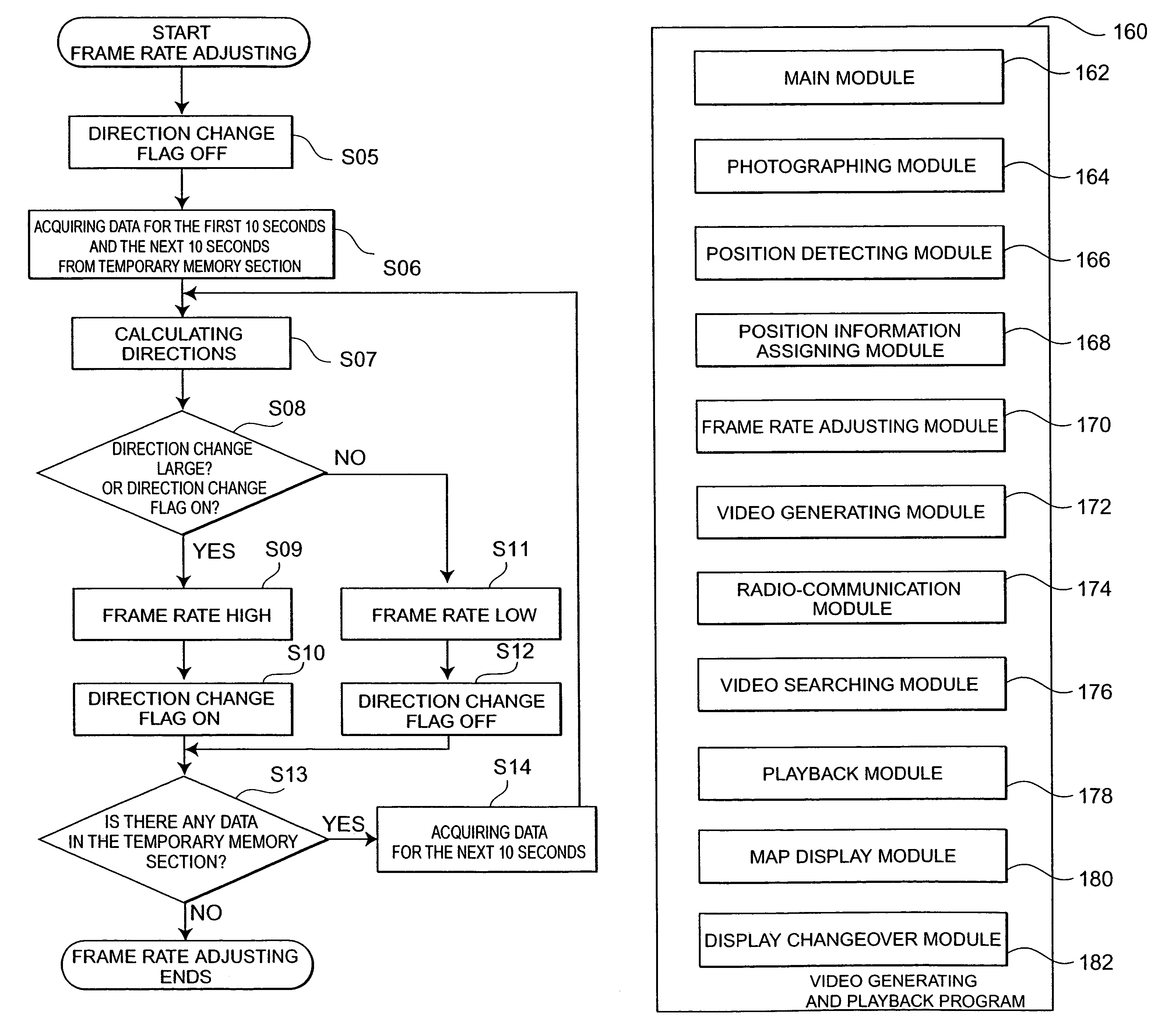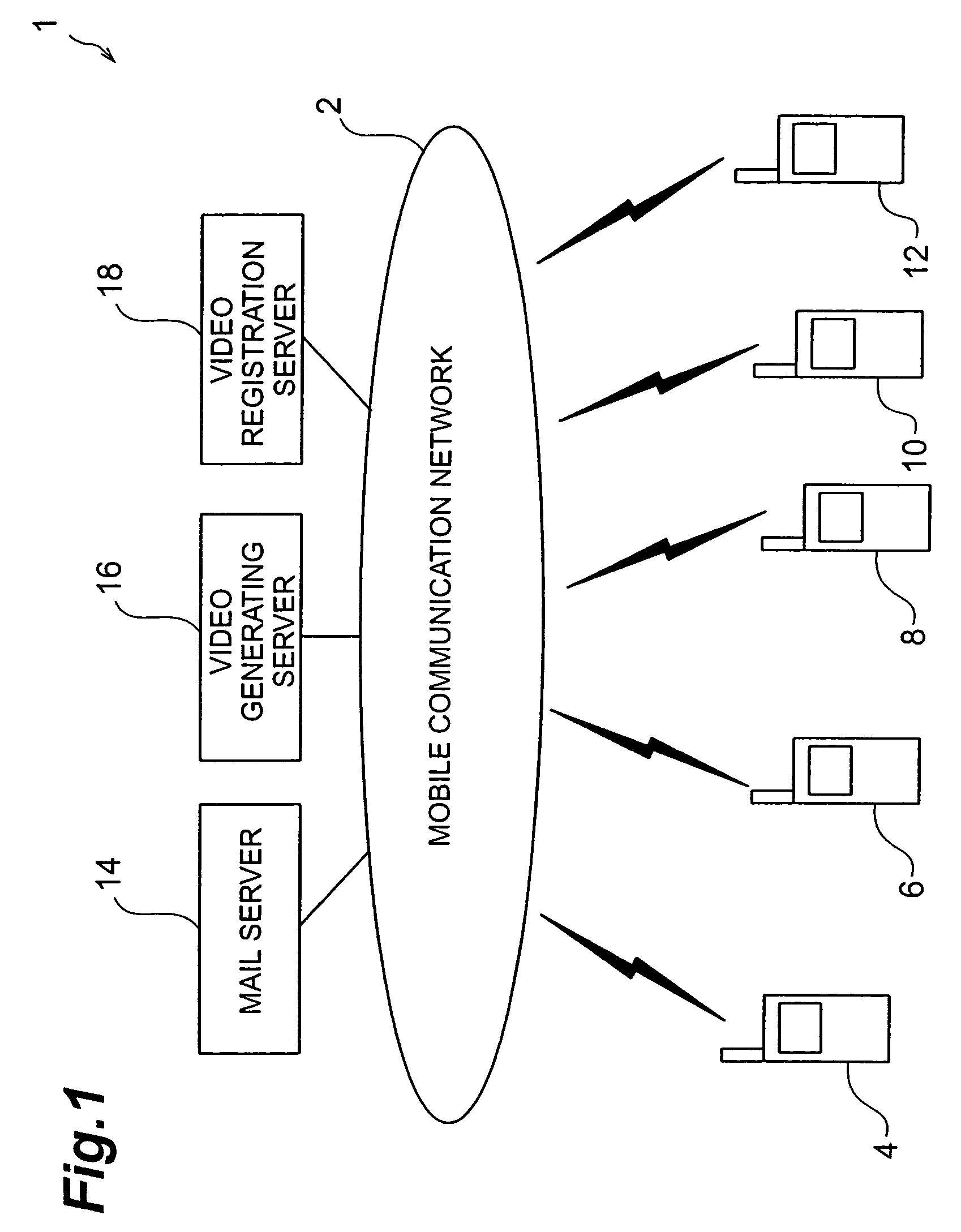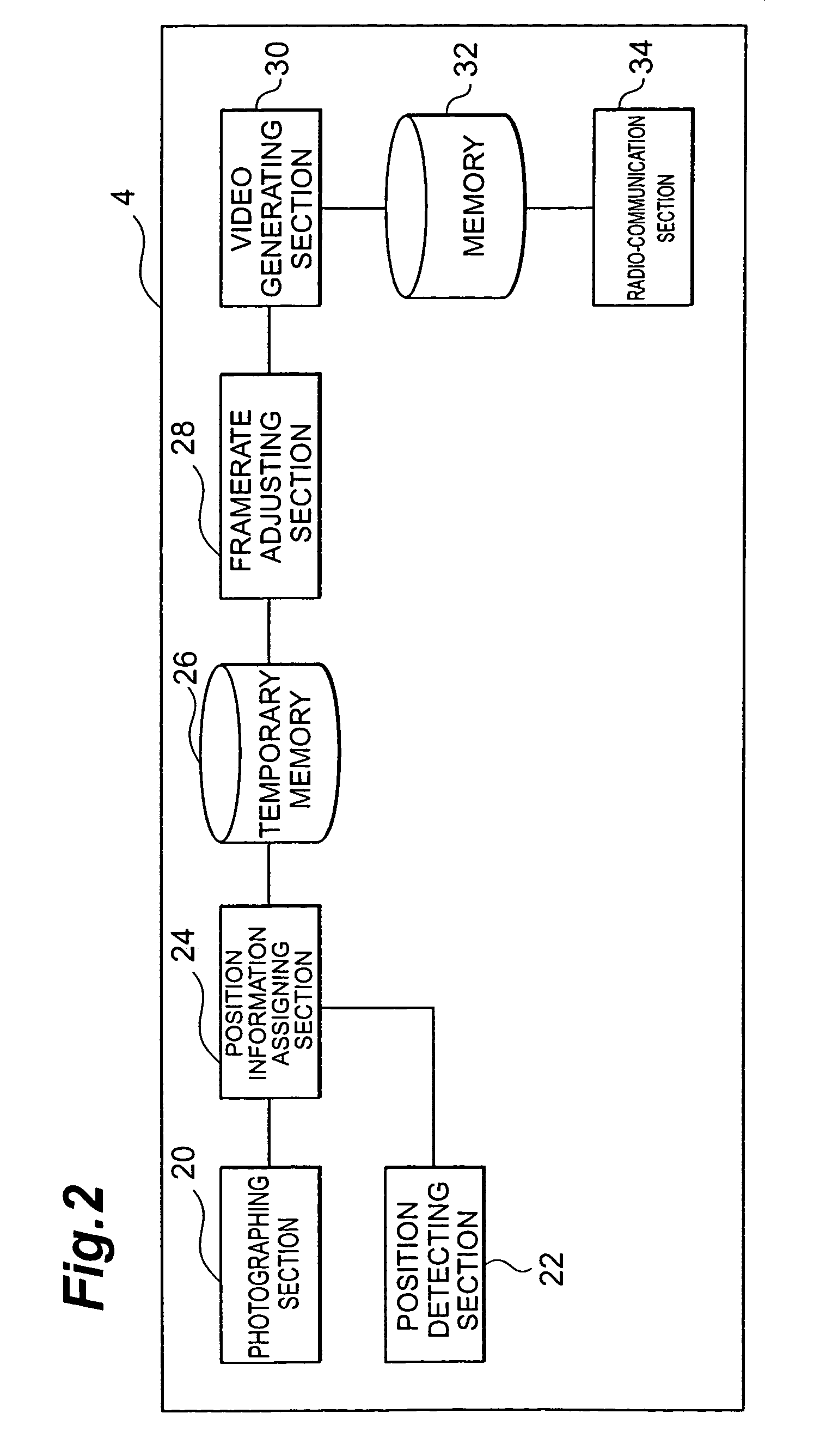[0017]In the mobile communication terminal according to this invention, each images acquired by the photographing means in a predetermined time interval is associated with position information concerning the position at which the image is acquired. Then, the video generating means generates, from a plurality of images including images each associated with the position information, a video including frames each associated with the position information. Then, the playback means displays the video and the map display means displays, by superimposing onto two-dimensional map information, a travel locus based on items of the position information associated with frames of the video being played back. Thus, the present invention provides a mobile communication terminal capable of generating a video including frames each associated with the position information which is little deviated from the position at which the frame is acquired. Further, since the map display means displays, by superimposing onto two-dimensional map information, a travel locus based on the items of position information associated with frames of a video being displayed by the playback means, this mobile communication terminal can provide information concerning position on a two-dimensional map and a video concerning the scenes around the position to the user.
[0019]In the mobile communication terminal structured as above, if there is no large direction change around the photographed position on the basis of the travel locus, the
frame rate adjusting means sets a low
frame rate for the video to be generated from images acquired around this position. Thus, the mobile communication terminal can generate a video having a low
frame rate for areas including no large direction change and therefore no significant change in scenes within the field, thereby having reduced capacities.
[0021]In the mobile communication terminal structured as above, the second transmitting means transmits to the
server a video and the position information associated therewith, and then receives the video of which frame rates are adjusted by the
server. The
server sets, for sections in which there is no large direction change based on the travel locus around the positions at which images are acquired, a low frame rate for the video of the positions. Thus, the mobile communication terminal structured as above can generate a video having a low frame rate for sections including no large direction change and therefore no significant change in scenes within the field, thereby having reduced capacities.
[0023]The mobile communication terminal structured as above superimposes, onto a video, a predetermined symbol indicating the direction of travel, and therefore can provide convenient
route guidance service to the user of the mobile communication terminal.
[0033]The program structured as above causes a mobile communication terminal to operate as the position information acquiring means, the photographing means, the position information assigning means, the video generating means, the playback means and the map display means as described above. Therefore, the mobile communication terminal, which is operated according to the program, can generate a video including frames each associated with position information, which is little deviated from the position at which the frame is acquired. The mobile communication terminal which is operated according to the program can also display, on two-dimensional map information, a travel locus based on the position information each associated with the frame of the video by the map display means, and therefore can provide information concerning position on a two-dimensional map and a video concerning the scenes around the position.
 Login to View More
Login to View More  Login to View More
Login to View More 


